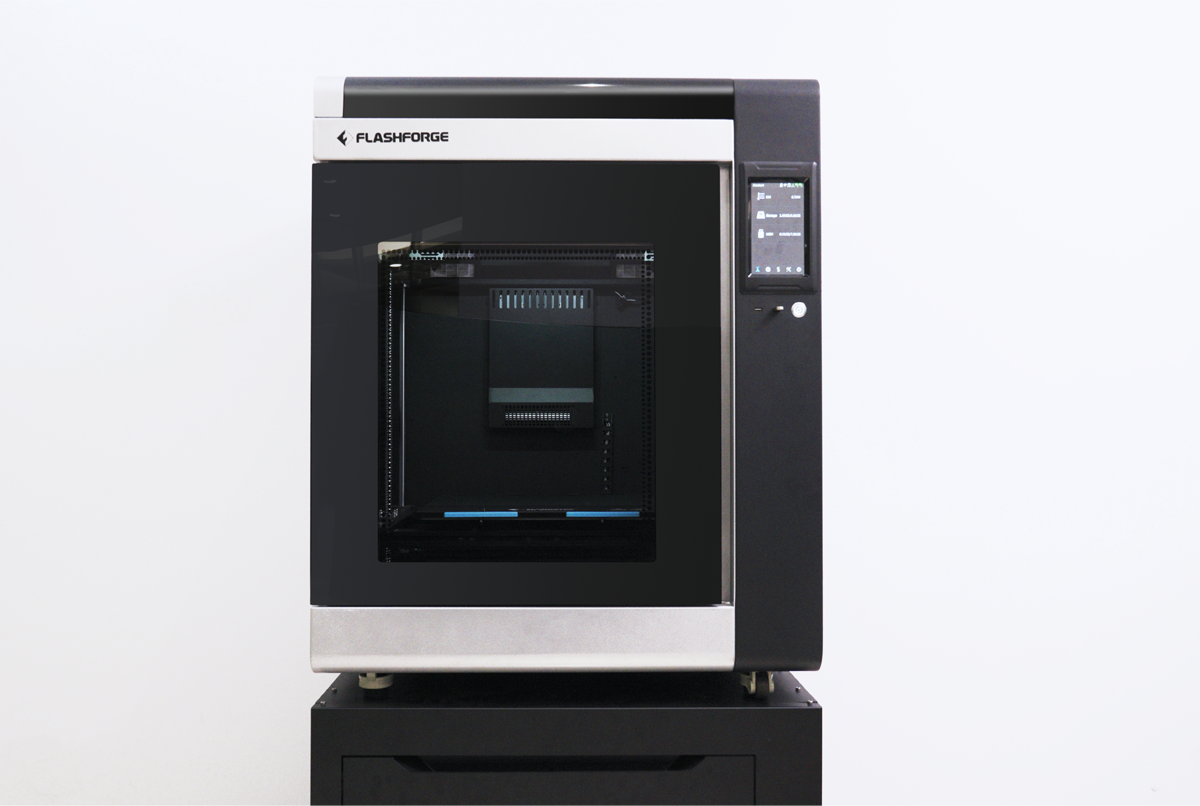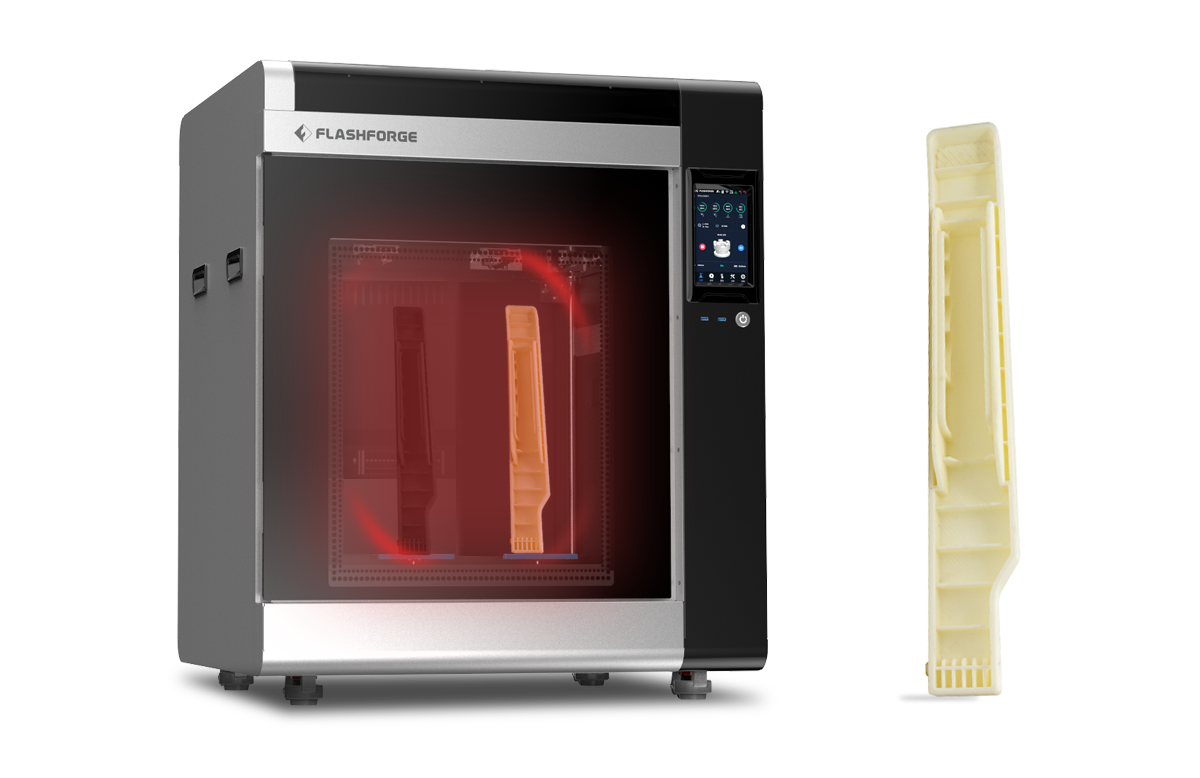Additive manufacturing is continuing to find novel architectural and interior design applications, with use cases such as customized furniture becoming increasingly popular with consumers.
3D printer manufacturer Flashforge has demonstrated how its 3D printing technology can help to optimize furniture design and production processes while finding more applications for additive manufacturing within the sector.
“With market competition getting increasingly severe, our success depends on whether we can get better products to market at a shorter time and lower cost,” said Mr. Lee, R&D Director of the undisclosed furniture manufacturer. “Earlier this year, we integrated 3D printing into the prototyping stage. This brought us many more benefits than we expected. The per prototyping time is reduced to two to three days from the previous seven to 10 days, and the previous annual prototyping cost was $30,000.
“We can hardly tell how much we could save with the one-time cost of a 3D printer. Most importantly, keeping the prototyping work in-house saves us the worry of intellectual property protection.”

Advantages of 3D printing furniture
Typically, the furniture production industry makes use of traditional molding, production and accessory design processes to mass-manufacture items in huge numbers. However, these methods can leave little room for customization or flexibility within the design stage.
According to Flashforge, the consumer market is increasingly leaning away from this model towards more individualized furniture that can be uniquely customized to an individual’s tastes. Due to its flexibility, 3D printing can meet this demand in a much shorter time frame than most conventional methods allow.
3D printing also allows for rapid prototyping during the design process and can open up a wide variety of material options. By integrating additive manufacturing into their production lines furniture manufacturers could potentially achieve much faster cycle times and reduce their costs.

Speeding up furniture production
Flashforge has identified three areas within furniture production that could be improved with its 3D printing technology, namely cycle time, process flexibility, and material variety. The firm carried out a case study with an undisclosed furniture manufacturer to improve these elements within its production process.
The furniture manufacturer in question owns its own production line and factory, and wished to optimize two aspects of its production. First, the company identified that the furniture sector is material-intensive, leading to high material costs that it wished to lower. Secondly, the firm observed that complicated manual operations in its production process were causing inaccurate working hours and issues with delivery.
To address these sticking points, Flashforge devised a plan to apply its 3D printing technology to a specific field of the manufacturer’s production, in particular its beach, backyard and camping furniture. Flashforge then used its Creator 4 3D printer to print plastic parts for the furniture, such as T-joints or rollers, and compared the benefits of the 3D printing process to the manufacturer’s existing production methods.

3D printing furniture with the Creator 4
Launched last month, the Creator 4 3D Printer is a high-performance FDM system designed with flexibility and adaptability at the fore. Featuring an independent dual extrusion (IDEX) setup and a large-format build volume of 400 x 350 x 500 mm, the machine offers advanced functionality to design, engineering, and manufacturing firms looking to carry out both functional prototyping and end-use production applications.
Flashforge deployed the Creator 4 for the project due to its ability to shorten the time period between a sample part’s design and production, and in turn, reduce costs. According to Flashforge, its 3D printers can decrease cycle times by between five to seven days, providing a “nearly perfect” sample in a significantly shortened preparation time.
Flashforge’s 3D printing technology also enabled the furniture manufacturer to make changes to a sample at any point during the design process, as opposed to time-consuming traditional processes that allow only for a tiny adjustment each time a sample is produced.
According to Flashforge, in the 30 days after the furniture manufacturer received the Creator 4 3D printer, it was able to keep producing steady samples. Over 5,000 hours of continuous printing with the machine’s printing chamber remaining at a constant 65ºC reportedly provided an “excellent” condition for producing the components. Meanwhile, optimization on the xyz axis made part detail increasingly accurate.
The final area of the furniture manufacturer’s production that Flashforge sought to target was the variety of materials. Considering the different requirements of furniture, such as comfort, strength, and stability, the plastic material in question should also be varied to meet these specific needs. The most common material used in such applications is ABS and ASA, however for future expansion, Flashforge identified a multi-material printer was needed.
After the Creator 4 was put into production, the furniture manufacturer found that PLA-CF (carbon fiber) and ABS performed well for the required applications. Due to its carbon fiber reinforcement, PLA-CF is more solid than ordinary PLA however remains lightweight. The material could also prevent shrinking during the printing process.
In most cases, Flashforge observed ABS would be suitable for most of the parts produced by the manufacturer, and printed the project parts in ABS. The furniture manufacturer was able to produce both large-scale and thin-layer components as the Creator 4’s three extruders could be changed anytime throughout the production process.
Throughout the project, Flashforge provided training and presentations to the furniture manufacturer to ensure the optimal use of its 3D printing technology within the production process.
Just as the undisclosed furniture manufacturer has benefited from Flashforge’s Creator 4 3D printer, manufacturers of other plastic products, such as baby carriage strollers, automotive components, parts for electrical appliances, and industrial parts, could also see gains within their prototyping and low-to-medium production processes. Manufacturers who invest in the Creator 4 can benefit from a one-year warranty, comprehensive training, and lifetime support.
Flashforge recently shipped the first batch of its Creator 4 3D printers to its suppliers in European countries, with more heading to the region in December. Those interested in finding out more about Flashforge’s machines can contact the company’s sales team or visit the Flashforge website.

Subscribe to the 3D Printing Industry newsletter for the latest news in additive manufacturing. You can also stay connected by following us on Twitter and liking us on Facebook.
Looking for a career in additive manufacturing? Visit 3D Printing Jobs for a selection of roles in the industry.
Subscribe to our YouTube channel for the latest 3D printing video shorts, reviews and webinar replays.
Featured image shows a furniture component 3D printed on the Creator 4. Photo via Flashforge.



